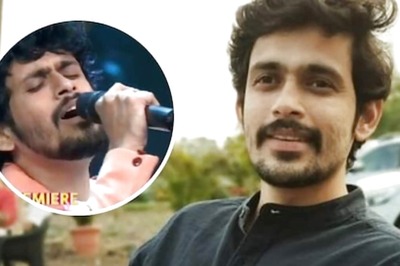
views
Change is the only constant—and this appears to be the new rule of contemporary Indian politics. This is true for all the major political parties in India, especially for the Bharatiya Janata Party (BJP) and the Congress. At the national level one saw a revamp of the Union Council of Ministers with sweeping changes. Unquestioned loyalty and evidence of performance seemed to be the key factors to decide who was in and who was out. In the past few months, the BJP saw a change of guard in three important states. There is a change of guard effected by the Congress in Punjab.
The Janata Dal (Secular) in Karnataka constantly shuffles its partners—at times wooing the Congress and at other times aligning with the BJP. In different local bodies, it could have alliances with different parties and constantly shifts its stand when it comes to state and national politics. After the Trinamool Congress (TMC) returned to power in West Bengal, we saw a procession of BJP leaders ‘returning’ to or ‘moving’ towards the TMC— Babul Supriyo being the latest in the procession! The Shiv Sena aligned with the Congress and the NCP with consummate ease to form a government in Maharashtra. The developments in Gujarat of not merely a change in the chief minister but also putting in place a fresh Council of Ministers is the quintessence of change being the only constant.
The developments in Gujarat have verily become the focus of attention. First, the chief minister abruptly submitted his resignation. There was immense speculation on who his successor would be. I had maintained in the print and electronic media that the central leadership of the BJP would come up with a surprise name. All those mentioned as probable chief ministerial candidates must have been hoping that their names were not projected so much. Since 2014, whenever the BJP has named a new chief minister, the stamp of the central leadership in making the choice and ensuring a surprise element have been the feature. This has been the case in Haryana, Jharkhand, Uttar Pradesh, Goa, Uttarakhand, Karnataka and now Gujarat (both when Vijay Rupani was made the CM and now when Bhupendra Patel took over).
In some ways, this is reminiscent of what happened in the Congress party in the 1970s and 1980s. Congress state governments saw frequent change of chief ministers at the will of the high command. The ‘powerful’ central observer carried the name of the new leader, to be ‘unanimously elected’ by the legislature party. There is a particularly well-known story regarding the Congress high command. A leadership change in a state was due, but the high command was unsure of who the new leader should be. The legislature party meeting had been fixed and the ‘central observers’ were leaving Delhi for the state capital. They were handed three envelopes with three names and they were instructed to wait for the final decision of the high command on which name to announce. The story goes that the observers opened the wrong envelope and announced the name. The person was unanimously elected and stayed on as the chief minister for two years.
ALSO READ | Shape Up or Ship Out: After Amarinder Singh, All Eyes on Jaipur and Raipur as Gandhis Assert Themselves
In Gujarat, not only was the chief ministerial choice a surprise, there was more suspense awaiting all. The chief minster was about to head a ministry with none from the previous council of ministers. The writ of the central leadership was clearly evident when ministers from the Rupani ministry publicly applauded the sweeping changes and were present for the swearing-in ceremony of their successors. The writ of the central leadership of the BJP is also seen across various levels. It was seen in the Union Council of Ministry reshuffle and in the leadership change in Uttarakhand, Karnataka and now Gujarat.
There are important similarities and critical differences between what happened in Karnataka and Gujarat. What were the similarities? The timing of the change was clearly decided by the central leadership of the party. The choice of the new leader had the clear stamp of approval from the central leadership. In the manner that the ministry was constituted too, the role played by the central leadership was evident. The similarity ends here. Karnataka has had a revolving-door policy with the electorate changing the ruling party every five years since 1989 (more than three decades). On the other hand, in Gujarat, the BJP would be next year going back to the electorate after being in power for three decades. A Council of Ministers with a new look was dictated by the party’s attempt to return to power and stave off any possible trace of anti-incumbency. One way of wishing away anti-incumbency was by presenting the electorate with a totally new ‘set’ of leaders in the government. One needs to wait till next year to see if this strategy would pay any dividends.
In Karnataka too, one notices that in the making of the ministry the clear influence of the central leadership was evident. Not saddling the chief minister with any deputy chief ministers and introducing newcomers while retaining a core of the old team was the strategy. In Karnataka, the BJP has never won a clear majority in a state election. Thus, a balancing act was required.
The Congress too has had its share of change. Its long-serving chief minister in Punjab has resigned, albeit in protest and kicked up a storm. A new leadership has been announced by the high command. The absence of clarity and stability in the central leadership has to an extent weakened the capacity of the ‘High Command’ to ‘Command’. This is clearly seen in Punjab. Developments in Chhattisgarh and Rajasthan are being keenly watched. In the past, such changes have led to leaders moving out of the Congress and forming their own parties. This happened in West Bengal and Andhra Pradesh. This led to the fall of their government in Madhya Pradesh and also weakened it in Assam where a former Congress leader is today the BJP chief minister. Unless the Congress brings in an element of clarity and decisiveness with regard to its central leadership, any changes lower down could face hiccups, as is being seen now in Punjab and was seen earlier in Rajasthan.
We thus have two models of change—one endorsed by the BJP and the other adopted by the Congress. The way politics shapes up in the coming months and in the crucial elections next year would define and decide the impact of these changes.
The author is Vice Chancellor of Jagran Lakecity University, Bhopal. The views expressed in this article are those of the author and do not represent the stand of this publication.
Read all the Latest News , Breaking News and Ukraine-Russia War Live Updates here.

















Comments
0 comment